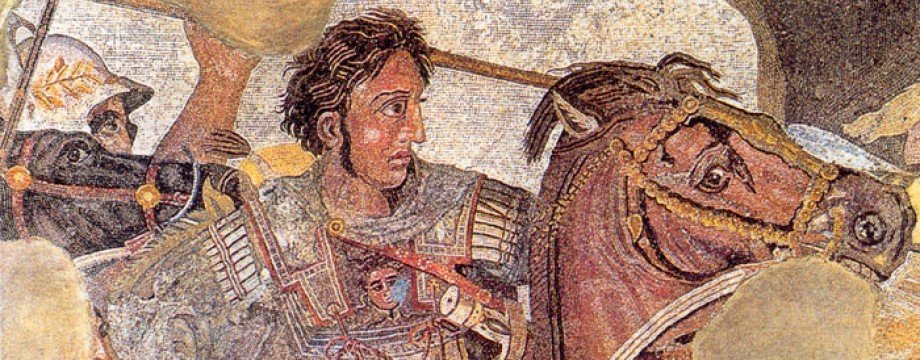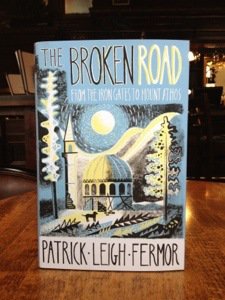To paraphrase the Patient, today was a good day - I finally arrived in Constantinople
.
No, I have not left home. Rather, three months after starting the book, I finally came to the end of The Broken Road - the third part of Patrick Leigh Fermor’s account of his walk across interwar Europe, from the Hook of Holland to the former capital of of the Byzantine Empire.
.
Just as Leigh Fermor ‘novelised’ parts of his account I have also embellished the truth a little. The Broken Road doesn’t actually end with PLF arriving in the city we now call Istanbul. It ends mid-sentence some fifty miles away. This is because Patrick Leigh Fermor died in 2011 without finishing the last book in his trilogy. Sadly, he suffered very severe writer’s block in his later years. So much so that The Broken Road is based on an account of his journey that PLF wrote in the 60s.
.
To round the book off, its editors - Artemis Cooper (who has also just written a biography of PLF) and Colin Thubron - have included excerpts from Leigh Fermor’s diary, written while he was in Constantinople. Unfortunately, they are very brief and do not do justice to the city he spent two years walking towards. Perhaps with that in mind, Cooper and Thubron end the book with Leigh Fermor’s much fuller diary entries from his visit to Mount Athos, which he sailed to after leaving Asia Minor.
.
So far as The Broken Road is concerned - you can tell that the work is unfinished. By Leigh Fermor’s standards it is very unpolished. He is such a good writer, though, that even the rough work is still very good. As with the Road’s predecessors, A Time of Gifts and Between the Wood and the Water, I oscillated between marvelling at the now lost world that PLF describes and feeling great sadness over the sad fate that befell any number of the wonderful people he met. What I think I will remember the book for most, however, is the final section on Mount Athos.
.
Leigh Fermor’s Holy Mountain has its sinners as well as saints, men poor in spirit as well as those who are rich but it also comes across as a place of peace and serenity. Like his book A Time to Keep Silence - which is also about visits to various monasteries - the Mount Athos is definitely a segment worth reading on a rainy day.
.
I have said before that Patrick Leigh Fermor had something of Alexander the Great in him. By this I meant his adventurous spirit (though as the Kreipe Affair showed PLF was no mean soldier). I might not have mentioned The Broken Road on this blog had I not read the following on The Stone and the Star blog.
When [Leigh Fermor] wrote about Altdorfer’s famous painting The Battle of Alexander at Issus, something swept over me - I had almost forgotten that I owned a small copy of it, from the gallery in Munich where it hangs. It is a remarkable painting and I think the feeling I had (and still have) for it ties into my fascination with certain types of fantasy landscapes - the first edition I owned of The Lord of the Rings featured cover art which now looks very Altdorfer-esque to me.
I encourage you to read the whole post as it is well written and thought provoking. For my part, I shall say this -
- I am very grateful to Clarissa Aykroyd for reminding me that Leigh Fermor mentioned Alexander! It is not beyond the realms of possibility that I have mentioned this before, but I had forgotten if so and it is always nice to be reminded
- As a lifelong fan of all Tolkien’s works I appreciated the connection that she made between him and Alexander. Insofar as they thought much and lived/wrote about heroism the two men are quite similar.
- Her mention of Alexander gives me a reason here to mention a thought I had after finishing the book: how different Orthodoxy is to ancient Greek religion. Or is it? This kind of question really demands a post but I can immediately think of one point of connection: hospitality. In antiquity, Greeks were morally obliged to be hospitable (see Laura Gill’s Orestes: The Great Lion, which has been discussed elsewhere on this blog, for an example of this). So were the monks of Mt Athos. There is difference between them, though; for the ancients, they had to be hospitable or else. The monks were hospitable to Leigh Fermor for a positive reason - the love of Christ. Humans being humans, though, his passage was eased by a letter of introduction from the Ecumenical Patriarch of Constantinople.
.
To conclude, here is a wonderful photograph I discovered on Tumblr - posted along with a few others by a user called ‘kyrosk’. It shows Mount Athos from Mount Olympus. So near… yet that road that connects them would not support even the lightest footfall.


